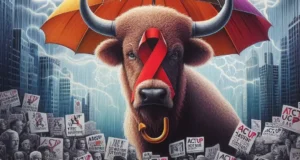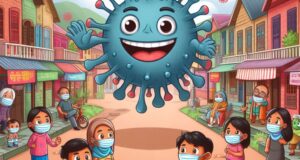Imagine two travelers using the same narrow bridge to cross a river. One walks safely to the other side, while the second unknowingly brings a venomous snake tucked under his coat. That bridge—once a path of connection—becomes a shared danger. In the world of disease transmission, that bridge is a needle, and the hidden threat is HIV.

Needle sharing refers to the practice of using the same syringe or needle by multiple people, often among those who inject drugs. It may seem like a shortcut, a quick fix, or a way to save resources—but in reality, it’s one of the fastest routes to spreading bloodborne infections, especially HIV.
The global health community has asked for decades: AIDS—where did it come from? The question isn’t only about geography or history, but also about how the virus traveled from one person to another so quickly.
Let’s break this down with a vivid metaphor.
Think of the bloodstream as a private vault—sealed, personal, and secure. A syringe, when used properly and sterilized, is like a secure key. But when the same needle is passed from hand to hand without cleaning, it becomes a hacked key, one that carries secrets from the last vault it opened—secrets like HIV.
When someone living with HIV uses a needle, a tiny trace of infected blood can remain inside. If another person uses that same needle, even hours later, that trace can enter their bloodstream, delivering HIV directly into the body. There’s no warning light, no alarm—it happens in silence.
In the early years of the HIV epidemic, needle sharing became one of the main reasons for the rapid spread of the virus, especially in urban centers. Communities dealing with poverty, addiction, and lack of healthcare often had limited access to clean syringes or knowledge about the dangers of reusing them. The result? A surge in infections that left health systems overwhelmed and families devastated.
So again, the question arises: AIDS—where did it come from? The virus may have originated in Central Africa, possibly passed from chimpanzees to humans. But it was human behavior—like needle sharing—that gave it wings.
What makes this method of transmission even more dangerous is how preventable it is. One clean needle—just one—could make the difference between life and lifelong illness. That’s why harm reduction programs around the world now focus on safe injection practices, needle exchange programs, and education in communities at risk.
It’s important to understand that those who share needles are not evil or irresponsible—they are often victims of circumstance: addiction, mental health challenges, or social neglect. Blaming them doesn’t solve the problem—educating and helping them does.
Today, much progress has been made. Many cities now offer free, sterile needle kits, safe injection zones, and access to addiction recovery resources. But still, in areas where poverty and stigma rule, needle sharing continues to fuel HIV’s fire.

In conclusion, needle sharing is like trusting a stranger with your home’s only key—one they might’ve just used to enter a burning building. It’s a shortcut paved with risk. And when we continue to explore the haunting question—AIDS where did it come from?—we must look not just at origins, but at the decisions and systems that allowed it to spread.




